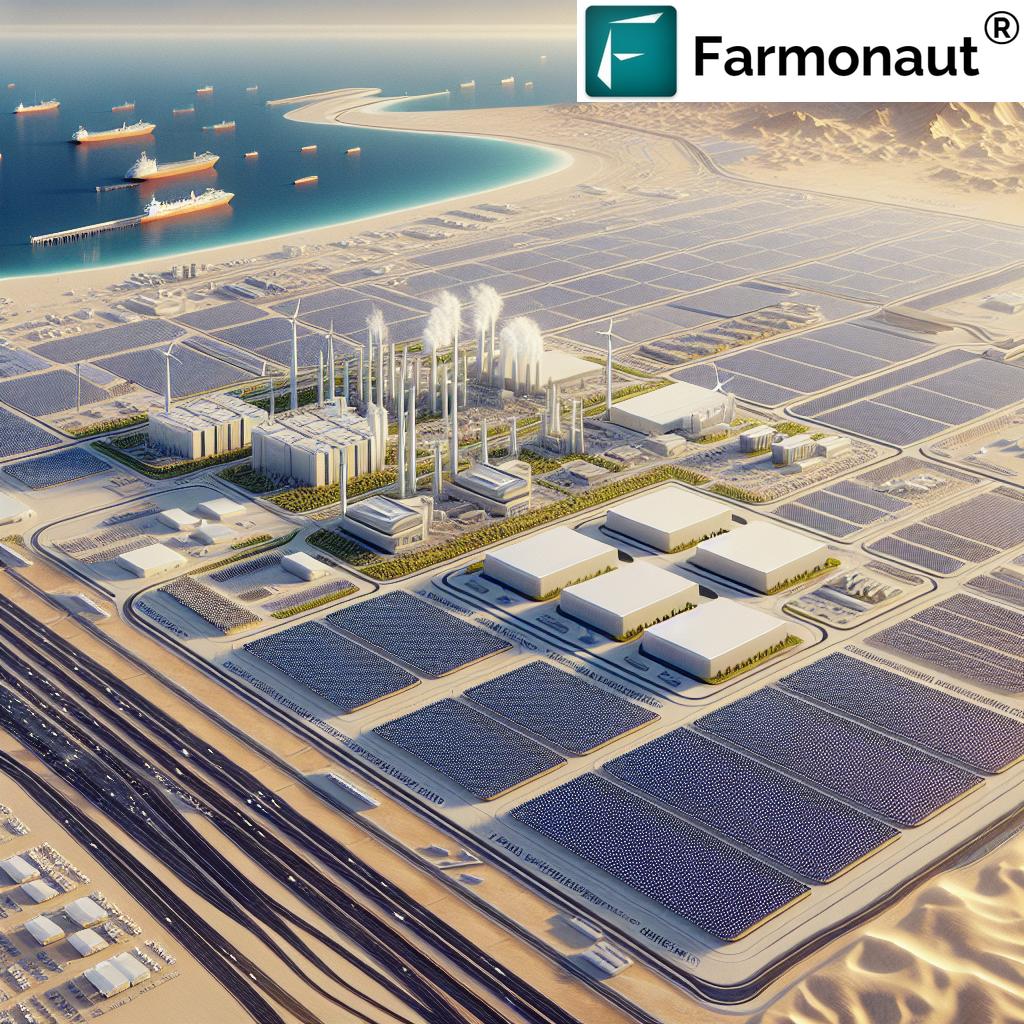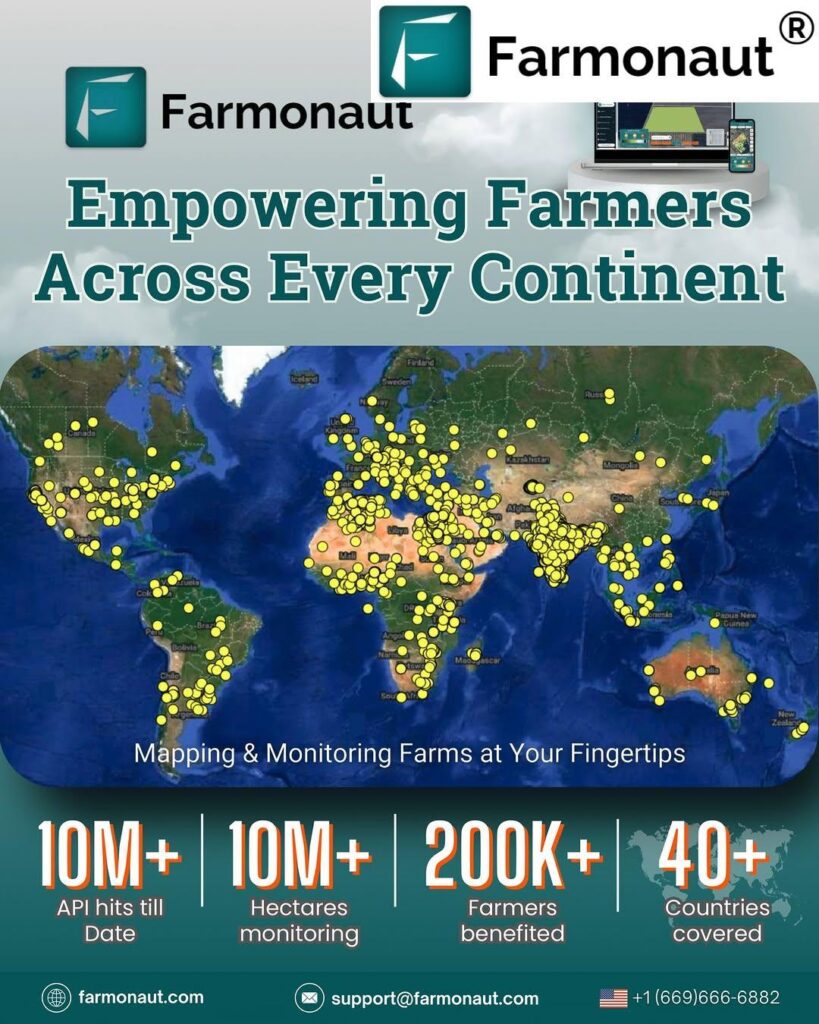Saudi Arabia’s Critical Minerals Strategy: Reshaping Global Supply Chains and Economic Diversification
“Saudi Arabia plans to exploit 3 key minerals: copper, gold, and bauxite, as part of its Vision 2030 economic diversification.”
In the ever-evolving landscape of global resources and economic strategies, we are witnessing a significant shift in the critical minerals market. At the forefront of this transformation is Saudi Arabia, with its ambitious plans to become a mineral processing powerhouse. This strategic move, backed by the United States, aims to reshape global supply chains and counterbalance China’s long-standing dominance in the industry. As we delve into this topic, we’ll explore the implications of Saudi Arabia’s critical minerals strategy on global mineral security policy, economic diversification, and the future of industrial supply chains worldwide.
The Global Critical Minerals Landscape
To understand the significance of Saudi Arabia’s strategy, we must first examine the current global critical minerals landscape. Critical minerals are essential components in various industries, including renewable energy, electronics, and defense technologies. Their importance has grown exponentially in recent years, particularly as the world transitions towards cleaner energy sources and advanced technologies.
China has long been the dominant player in this field, controlling approximately 90% of the world’s capacity for processing these vital resources. This monopoly has raised concerns among Western countries about supply chain resilience and national security. The need for diversification and alternative sources has become increasingly apparent, especially in light of recent geopolitical tensions and trade restrictions.

Saudi Arabia’s Vision 2030 and Mineral Resources
Enter Saudi Arabia, a nation traditionally known for its oil wealth but now positioning itself as a key player in the critical minerals sector. As part of its Vision 2030 economic diversification plan, the Kingdom has set its sights on developing its substantial mineral resources. This ambitious strategy focuses on:
- Exploiting reserves of copper, gold, and bauxite
- Expanding domestic refining and processing capacities
- Strengthening supply chains for battery materials and rare earth elements
- Venturing into electric vehicle manufacturing
- Enhancing fertilizer production capabilities
The scale of Saudi Arabia’s commitment is impressive. In early 2024, the Kingdom’s Ministry of Industry and Mineral Resources revised its estimate of unexploited mineral resources from $1.3 trillion to a staggering $2.5 trillion, bolstered by new discoveries. This revelation underscores the potential impact of Saudi Arabia’s strategy on the global minerals market.
U.S. Support and Global Implications
The United States’ backing of Saudi Arabia’s efforts is a crucial element in this evolving narrative. This support is part of a broader strategy to diversify global supply chains and reduce dependence on China for critical minerals. The implications of this shift are far-reaching:
- Potential reduction in global mineral processing costs
- Enhanced supply chain resilience
- Increased competition in the critical minerals market
- Geopolitical realignment in resource-based industries
As Peru’s Foreign Minister Elmer Schialer noted at the Munich Security Conference, this strategy could lead to lower costs as more centers for refinement and processing emerge. This economic benefit aligns with the broader goals of ensuring stable and diverse supply chains for critical minerals.
Saudi Arabia’s Strategic Investments
Saudi Arabia is not merely talking about change; it’s actively investing in its mineral future. The Kingdom has unveiled plans for a new mineral investment project valued at $100 billion, with $20 billion already in the final engineering phase or under construction. This massive investment demonstrates Saudi Arabia’s commitment to becoming a global leader in critical minerals processing and refining.
Furthermore, the collaboration between state-controlled Aramco and Saudi state mining company Ma’aden to explore and produce energy transition minerals showcases the integrated approach Saudi Arabia is taking. This joint venture aims to leverage existing expertise in resource extraction and apply it to the critical minerals sector.
The Role of Technology in Mineral Resource Management
As Saudi Arabia and other nations invest in critical minerals, the role of technology in resource management becomes increasingly important. Advanced technologies can help optimize exploration, extraction, and processing of these valuable resources. This is where companies like Farmonaut come into play, offering innovative solutions for resource management and sustainability.
While Farmonaut primarily focuses on agricultural technology, its satellite-based management solutions and AI-driven advisory systems demonstrate the potential for technology to revolutionize resource management across various sectors. The principles of precision agriculture could be adapted to mineral resource management, ensuring more efficient and sustainable practices.
Explore Farmonaut’s API for advanced resource management solutions
Access Farmonaut’s API Developer Docs for integration insights

Economic Diversification and Industrial Growth
Saudi Arabia’s push into the critical minerals sector is not just about resource extraction; it’s a key component of the Kingdom’s broader economic diversification strategy. By developing its mineral resources and associated industries, Saudi Arabia aims to:
- Create new jobs in high-tech and manufacturing sectors
- Reduce dependence on oil revenues
- Foster innovation and technological advancement
- Attract foreign investment and expertise
The development of electric vehicle manufacturing capabilities is a prime example of how the Kingdom is leveraging its mineral resources to drive industrial growth. This move positions Saudi Arabia not just as a supplier of raw materials but as a potential leader in the future of automotive technology.
Global Mineral Security Policy Landscape
The shift in global mineral security policy, exemplified by Saudi Arabia’s strategy and U.S. support, is reshaping international relations and trade dynamics. This new landscape is characterized by:
- Increased emphasis on securing diverse supply chains
- Growing competition among nations for mineral resources and processing capabilities
- Potential for new international partnerships and agreements
- Renewed focus on domestic resource development in many countries
As these changes unfold, we can expect to see a reconfiguration of global trade routes, strategic alliances, and investment patterns in the critical minerals sector.
“The global critical minerals market shift involves 2 major players: the US backing Saudi Arabia to counterbalance China’s dominance.”
Challenges and Opportunities
While Saudi Arabia’s strategy presents significant opportunities, it also faces challenges:
- Environmental concerns related to mining and processing
- Need for substantial infrastructure development
- Competition from established players in the global market
- Potential geopolitical tensions arising from shifting supply chains
Addressing these challenges will be crucial for the success of Saudi Arabia’s critical minerals strategy. The Kingdom will need to balance economic goals with environmental sustainability and navigate complex international relationships.
Global Supply Chain Implications
The emergence of Saudi Arabia as a major player in critical minerals processing could have profound effects on global supply chains:
- Diversification of supply sources, reducing dependency on a single region
- Potential for more stable pricing as competition increases
- New opportunities for logistics and transportation industries
- Enhanced resilience against supply disruptions
Industries relying on critical minerals, from electronics to renewable energy, may need to reassess their supply chain strategies in light of these developments.
The Role of Technology and Innovation
As Saudi Arabia develops its critical minerals sector, technology and innovation will play crucial roles. Advanced exploration techniques, efficient processing methods, and sustainable mining practices will be essential for success. This focus on innovation aligns with global trends towards more sustainable and technologically advanced resource management.
Companies offering technological solutions for resource management and sustainability, like Farmonaut in the agricultural sector, may find new applications for their expertise in the critical minerals industry. The principles of precision agriculture and satellite-based monitoring could be adapted to enhance mineral exploration and extraction efficiency.
Download Farmonaut’s Android App for innovative resource management
Get Farmonaut’s iOS App for advanced monitoring solutions
Global Critical Minerals Landscape Comparison
| Country/Region | Major Critical Minerals | Processing Capacity (estimated) | Investment in Mineral Development (estimated) | Key Industries Supported | Strategic Partnerships |
|---|---|---|---|---|---|
| Saudi Arabia | Copper, Gold, Bauxite, Rare Earths | Emerging (significant growth projected) | $100 billion+ planned | Electric Vehicles, Fertilizers, Battery Materials | United States, Aramco-Ma’aden JV |
| China | Rare Earths, Lithium, Cobalt, Graphite | 90% of global capacity | Significant (exact figures not available) | Electronics, Renewable Energy, Defense | Various African nations, Belt and Road Initiative partners |
| United States | Lithium, Cobalt, Nickel, Rare Earths | Limited (efforts to expand) | $2 billion+ (federal initiatives) | Defense, Aerospace, Electronics | Australia, Canada, European Union |
Future Outlook and Conclusion
As we look to the future, Saudi Arabia’s critical minerals strategy represents a significant shift in the global resource landscape. The Kingdom’s efforts to diversify its economy and become a key player in the critical minerals market have the potential to reshape global supply chains, influence mineral processing strategies, and impact industries ranging from battery production to fertilizer manufacturing.
The success of this strategy will depend on various factors, including:
- Effective implementation of investment plans
- Development of necessary infrastructure and expertise
- Navigating geopolitical challenges and market competition
- Balancing economic goals with environmental sustainability
As the global community continues to grapple with the challenges of securing critical mineral supplies, Saudi Arabia’s emergence as a potential powerhouse in this sector offers both opportunities and complexities. It underscores the dynamic nature of global resource politics and the ongoing evolution of international supply chains.
For industries relying on critical minerals, these developments signal the need for adaptive strategies and diversified supply chains. The shift also highlights the growing importance of sustainable and technologically advanced resource management practices across all sectors, from agriculture to mining.
In conclusion, Saudi Arabia’s critical minerals strategy is more than just a national economic initiative; it’s a catalyst for change in the global mineral security landscape. As this strategy unfolds, it will be crucial for stakeholders across industries to stay informed and agile, ready to adapt to the new realities of a more diversified and competitive critical minerals market.
FAQ Section
Q1: What are critical minerals, and why are they important?
A1: Critical minerals are raw materials essential for economic and national security. They are crucial components in various industries, including renewable energy, electronics, and defense technologies. Their importance lies in their scarcity, economic value, and potential supply chain vulnerabilities.
Q2: How does Saudi Arabia’s strategy aim to counterbalance China’s dominance in critical minerals?
A2: Saudi Arabia’s strategy involves significant investments in mineral exploration, processing capabilities, and related industries. By becoming a major player in critical minerals processing, Saudi Arabia aims to provide an alternative source for these materials, reducing global reliance on China and potentially influencing market dynamics.
Q3: What are the potential benefits of Saudi Arabia’s critical minerals strategy for the global market?
A3: The strategy could lead to increased competition, potentially lower prices, more diverse supply chains, and enhanced global mineral security. It may also spur innovation in mineral processing and related technologies.
Q4: How does this strategy align with Saudi Arabia’s Vision 2030?
A4: The critical minerals strategy is a key component of Vision 2030, Saudi Arabia’s plan for economic diversification. It aims to reduce the country’s dependence on oil revenues by developing new industries and creating high-tech jobs in sectors like mineral processing and electric vehicle manufacturing.
Q5: What challenges might Saudi Arabia face in implementing this strategy?
A5: Challenges include developing the necessary infrastructure and expertise, competing with established players in the global market, addressing environmental concerns related to mining and processing, and navigating complex geopolitical relationships.
Earn With Farmonaut: Affiliate Program
Earn 20% recurring commission with Farmonaut’s affiliate program by sharing your promo code and helping farmers save 10%. Onboard 10 Elite farmers monthly to earn a minimum of $148,000 annually—start now and grow your income!












